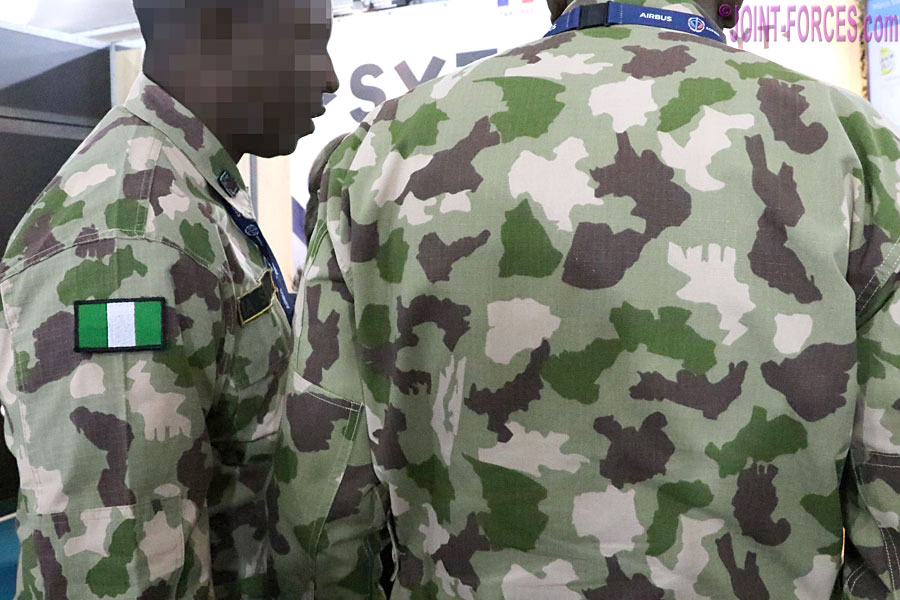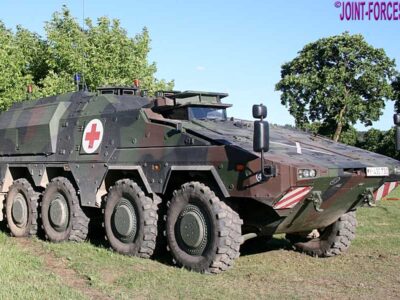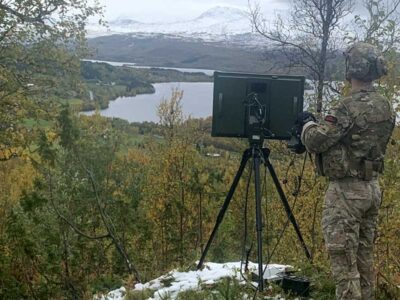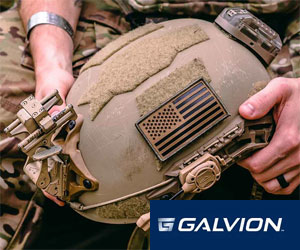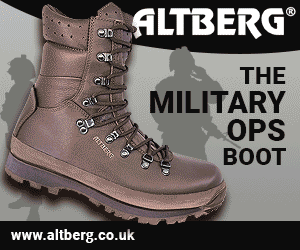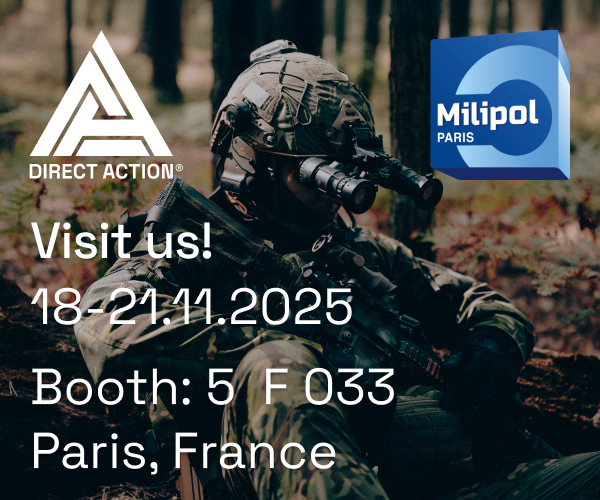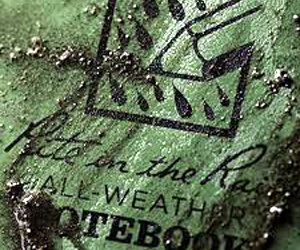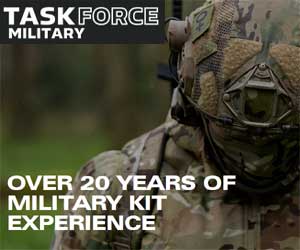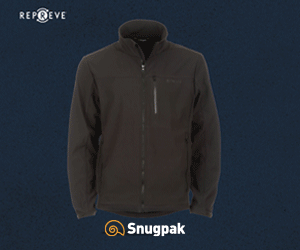In 2014 the Nigerian Armed Forces announced they were about to introduce new camouflage pattern combat uniforms, writes Bob Morrison.
~
Nigeria, which gained independence from Britain sixty years ago but is still a member of the Commonwealth, is a large and ethnically diverse West African country on the Gulf of Guinea stretching around 1,000 kilometres from the tropical Niger Delta in the south to the Sahara Desert in the north.
Until 2016, when two new camouflage patterns in Woodland and Arid colourways were rolled out in quantity, those members of Nigeria’s armed forces issued with camo (as opposed to single colour) uniforms mostly wore four-colour US M81 Woodland pattern in the south and, for a short time, US three-colour ‘Coffee Stain’ desert pattern in the much more arid north. However as these patterns were widely available commercially, resulting in their use by both Boko Haram jihadists and criminal extortionists posing as soldiers, in 2014 it was announced that new camouflage pattern uniforms produced under tight Government manufacturing control would soon be issued across all branches of the Nigerian Defence Forces.
Last year I spotted two Nigerian Special Forces delegates at the French SOFINS Special Forces seminar and exhibition who agreed to let me photograph the backs of their combat shirts and their insignia for our Kit & Camo section. Both officers, one from the Nigerian SBS (Special Boat Service) and the other from the Special Forces wing of the Nigerian Air Force Regiment, wore the arid version of the M14 four-colour pattern. As they were in clean fatigue and also did not wish their identities to be disclosed, I was of course unable to do my usual four-view photography on this occasion but was just grateful to have the chance to document this unique camo pattern.
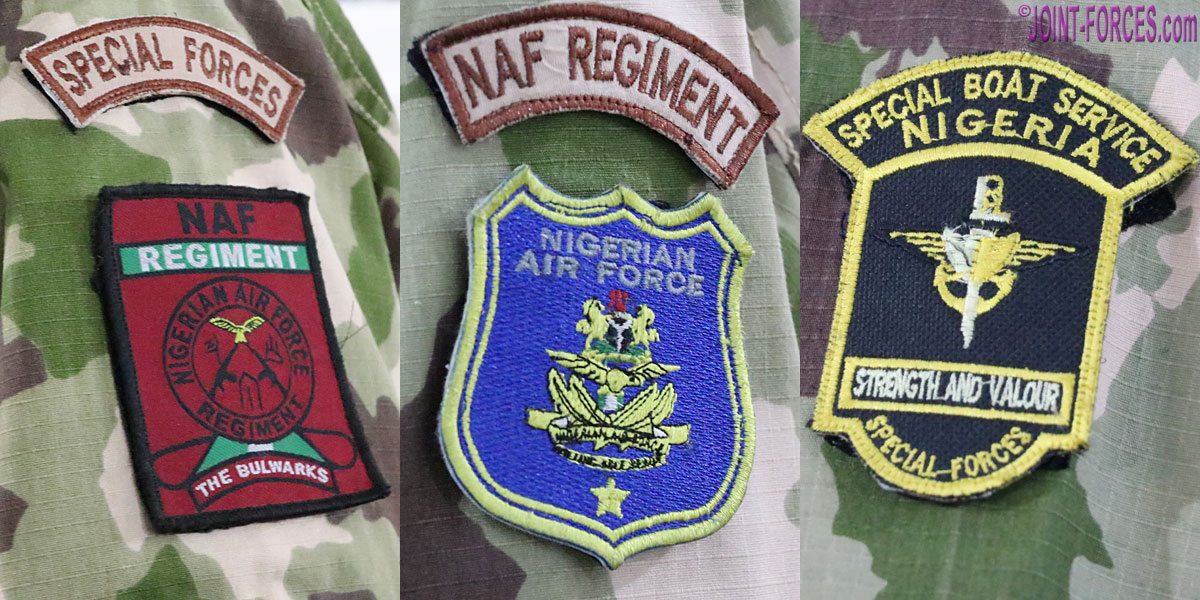
Both the Arid and Woodland (see further down) versions of Nigerian M14 camo use exactly the same print design with only the colours varying, though as the latter is predominantly worn in the Tropical Forest and Tropical Savannah southern and central climate zones its colours are more vibrant overall. The Arid version seen here worn by the Special Forces officers is more subdued as it was primarily designed for wear in the northern Sahel savannah region. The primary colour for the Arid version is a light khaki whereas the Woodland version uses a forest green shade. The three secondary Arid colours, in near equal proportions, are light stone / forest green / chocolate brown, whereas the Woodland secondary colours appear to be khaki drab / reddish brown / near black.
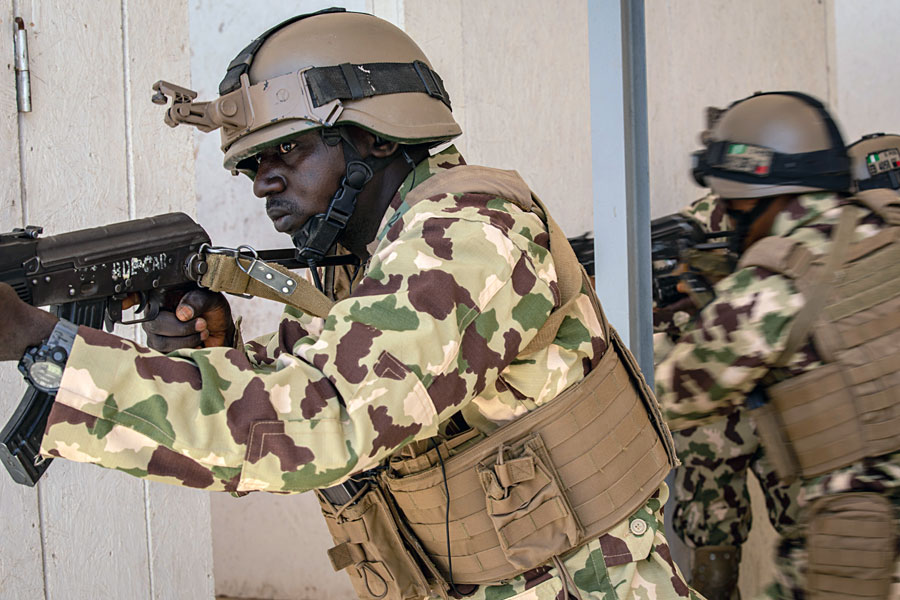
[US Army: Spc Miguel Pena]
As I have not been able to compare camo fabric samples, or uniforms, in identical natural light conditions I am afraid I cannot be 100% specific on colours. It is also noticeable from various US DoD photos captured in bright African sunlight that the Arid uniform looks much warmer than it does in my photos of the SF officers, which were shot inside a transparent roofed atrium on a bright overcast spring day in Western France. Should I ever get the chance to photograph Nigerian uniforms in the field I will update this article, but in the meantime I hope our camo and badge collector readers find my photos of the M14 Arid camo of interest.
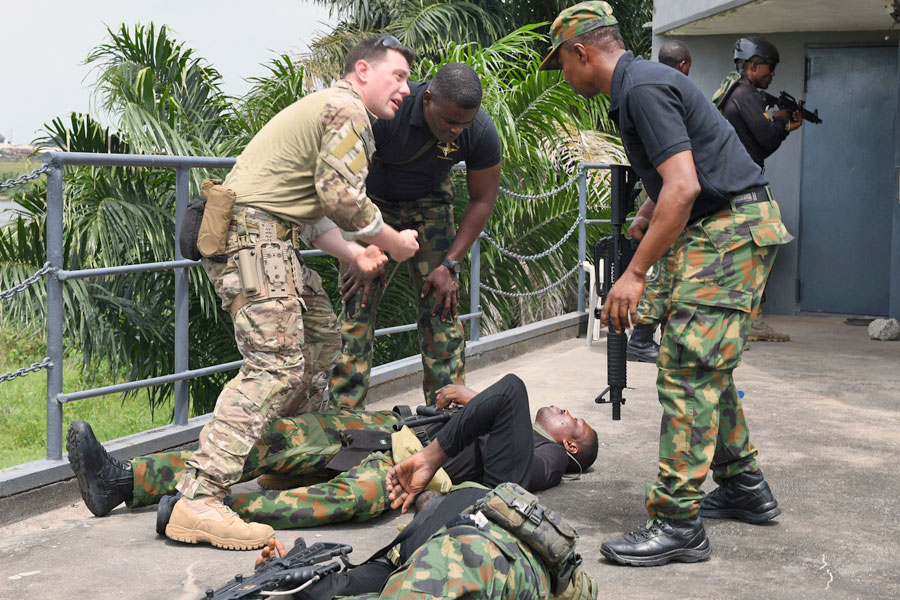

[images © Bob Morrison unless noted]


